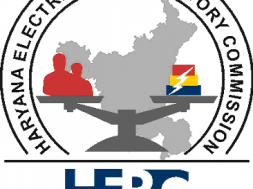
Market Wire: Safeguard Duty on Solar Panels to Increase Equity Requirement; Impacts Ongoing Projects
Ind-Ra-Mumbai: India Ratings and Research (Ind-Ra) believes the government’s proposal of levying 70% safeguard duty on solar cells and modules from China and Malaysia will increase power tariffs to INR3.30/kilowatt, around 35% higher than the lowest bid value of INR2.44/kilowatt hour. This is likely to impact power producers with low cost power purchase agreements and may stall under construction projects for which all the required solar panels were not imported.
Ind-Ra expects that 3GW-4GW of new capacity, auctioned in 2017, will be impacted. Solar cells and modules account 60% of the total project cost as per Ind-Ra’s portfolio. In addition, the power generators will have to rely on additional equity for any capex, since it would be difficult to raise new debt until any benefit of the change in law clause is obtained. EBITDA margins of domestic panel manufacturers can improve 7%-8%, if they are able to pass on a 10% increase in panel prices without a commensurate increase in its cost.
Most of the winning bidders have in-house engineering procurement and construction contractors with no provisioning of the additional safeguard duty, if applied retrospectively. The change in law clause in power purchase agreements may entail legal arbitration, further delaying power generation and deterring investors from solar sector (Renewable Power Contract Renegotiations Continue to Affect Investor Sentiment). The proposed safeguard duty will be imposed only on solar cells and modules barring polysilicon and wafers in the value chain, incentivising panel manufacturers to import wafers, and produce cell and modules indigenously.

India imports about 90% of its cells and modules requirement at an average price of INR30 million/megawatt peak (MWp)-32 million/MWp compared with the domestic procurement cost of INR40 million/MWp-42 million/MWp. With the proposed duty, this cost arbitrage gap will shrink, resulting in domestic cell and module manufacturers to become more cost competitive, provided they develop the capability to manufacture cells and modules by importing polysilicon and wafers, which almost have non-existent production capacity in India. At present, there are 55 domestic solar panel manufacturing plants, of which 15 are non-operational. Capacity utilisation of the domestic manufacturers stands low at around 53% (FY18 annualised installed capacity: 1,653MWp as per Directorate General of Safeguards report), due to intense competition from imported cells and modules.
Domestic demand grew 7x over FY14-FY17 with clear reliance on imported solar cells and modules. Discouraging imports by imposing heavy duty could disrupt capacity addition in the short-term and increase the solar power tariffs, until the domestic panel manufacturing industry scales up. This can delay the government’s target of adding about 10GW solar capacity yoy by two to three years to reach the overall target of 100GW by FY22.
The existing cost structure of the domestic manufacturers has some buffer to absorb such shocks. An increase in capex due to an increase in landed cost of modules, additional equity (or debt, or a combination of both) may be required until the change in law consideration is applied. Although some of the large developers may have the capacity to infuse additional capital, it may impact rating on account of temporary stretch in the cash flows.
Similarly, midscale developers may find it difficult to raise debt or equity necessary for additional capex, thus driving consolidation activity. Ind-Ra expects that equity infusion will take place for projects that receive clarity on increased tariff under the change in law provision. With the US imposing a 30% duty on imports from China and India in the realm of considering a safeguard duty, the viability of large excess capacity of Chinese players (already 24% capacity idle in 2016 as per Directorate General of Safeguards report) remains a big question unanswered.
There may also be a possibility for foreign players to set up greenfield projects to manufacture solar cells in India for domestic supply in the medium-to-long term.
The underperformance of the domestic solar industry can be majorly attributed to lack of manufacturing base for polysilicon and wafers (upstream stages of solar photovoltaic manufacturing chain), use of outdated technology (multi-crystalline aluminium black surface field), high cost of production due to higher interest rates and restrictions on Domestic Content Requirement (DCR)-based projects as per World Trade Organisation’s order released in October 2016.
The Ministry of New and Renewable Energy has proposed a number of incentives for promoting indigenous manufacturing of solar equipment across the value chain. These includes restructuring Domestic Content Requirement to include early stages of equipment development and upward integration, capital subsidy for new capacities/upgradation to the extent of 30%, interest subvention of 3% for loans taken from nationalised banks, thus supporting public sector units such as NTPC Limited (‘IND AAA’/Stable), Central Electronics Limited and Bharat Heavy Electricals Limited to set up 1GW each polysilicon module manufacturing facility to note a few.
The agency believes the migration to indigenous development from import dependency in the medium-to-long term will provide further stability to solar tariffs because the domestic industry will be more competitive to its foreign counterparts and will insulate against price volatility. Furthermore, it also reduces foreign exchange risk.













